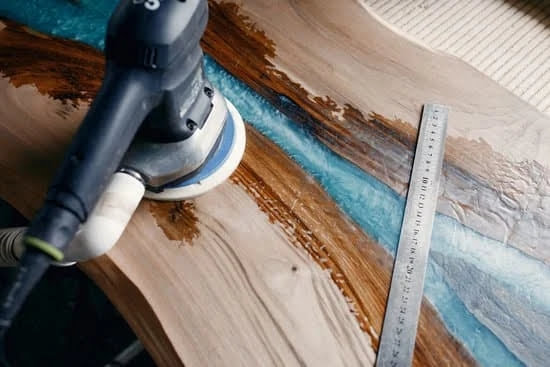What planes do you need to begin in woodworking? Whether you’re just starting out or looking to expand your collection, having the right tools is crucial for success in woodworking. In this article, we will delve into the essential planes that every beginner should have in their arsenal. From smoothing planes to jointer planes, we’ll explore the key tools needed to create high-quality, professional woodworking projects.
As a beginner in woodworking, it can be overwhelming to know where to start when it comes to selecting the right planes for your projects. Understanding the purpose and function of each type of plane is essential for making informed decisions about which ones are necessary for your specific needs. We’ll guide you through the process of identifying the essential planes that will set you on the path to mastering woodworking skills.
In this comprehensive guide, we will take a closer look at the important roles of smoothing planes, jack planes, block planes, jointer planes, and specialty planes in woodworking. Each type of plane serves a unique purpose in achieving different results, and we will discuss how they contribute to the creation of smooth surfaces, flat edges, and precise joinery. So let’s dive into the world of woodworking planes and discover what you need to begin your journey as a woodworker.
Getting Started
When starting out in woodworking, it’s important to have the right tools to ensure your projects turn out as planned. One of the most crucial tools for woodworking is a set of planes. But what planes do you need to begin in woodworking? Let’s take a look at the essential planes that beginners should consider adding to their toolkit.
Smoothing Plane
The smoothing plane is an essential tool for creating a smooth and flat surface on your woodwork. It is designed to remove any marks or imperfections left by other tools, such as the jack plane, and leave behind a clean, polished finish. This makes it an indispensable tool for achieving high-quality results in woodworking projects.
Jack Plane
The jack plane is perfect for rough lumber and initial flattening. It helps to quickly remove material from the surface of the wood, making it easier to achieve a level and smooth surface. For beginners, this plane can be extremely useful in preparing rough stock for further refinement with other tools.
Block Plane
An essential for end grain work and shaping small pieces, the block plane is another must-have tool for beginners in woodworking. Its compact size and maneuverability make it ideal for trimming and shaping smaller pieces of wood, as well as cleaning up end grains. Whether you’re working on small-scale projects or fine-tuning larger pieces, the block plane is a versatile tool that no beginner woodworker should be without.
As you start your woodworking journey, investing in these essential planes will provide you with a solid foundation for creating high-quality woodwork. A smoothing plane, jack plane, and block plane are indispensable tools that will help you achieve professional results from the outset. By understanding what planes are necessary for beginning woodworking, you can confidently start on your path towards mastering this timeless craft.
Smoothing Plane
The smoothing plane is an essential tool for any woodworker, especially beginners. This particular type of plane is designed to create a smooth and flat surface on wood, making it the perfect finishing tool for any woodworking project.
Whether you are working on a small decorative piece or a large furniture item, the smoothing plane will be your go-to tool for achieving a professional and polished finish. Here are some essential points to consider when choosing and using a smoothing plane:
- Blade type: When selecting a smoothing plane, consider the type of blade it comes with. A high-quality, sharp blade is crucial for achieving the best results. Look for planes with carbon steel or high-speed steel blades for optimal performance.
- Adjustment features: The ability to easily adjust the depth of cut and blade position is important for precision work. Choose a smoothing plane that offers smooth and precise adjustment features to ensure you can achieve the exact level of smoothness you desire.
- Comfort and control: Using a smoothing plane requires consistent and controlled movement. Look for planes with comfortable handles and ergonomic designs that allow for easy handling and maneuverability.
Overall, the smoothing plane is an indispensable tool in woodworking, especially for beginners who are just starting their woodworking journey. When used correctly, this tool can transform rough lumber into beautifully smooth and flat surfaces, setting the stage for impressive woodworking projects.
Furthermore, proper maintenance of your smoothing plane is essential to ensure its longevity and effectiveness. Regularly sharpening the blade, keeping it clean from debris, and storing it properly will all contribute to its performance in your woodworking tasks. With the right techniques and tools, mastering the use of a smoothing plane will greatly benefit your woodworking projects and help you achieve professional results every time.
Jack Plane
The jack plane is an essential tool for beginners in woodworking, especially when it comes to working with rough lumber. This versatile plane is designed to quickly flatten and smooth out the surface of rough wood, making it a crucial part of any woodworking toolkit. It is often the first step in preparing lumber for more detailed work using other planes.
One of the key benefits of using a jack plane is its ability to remove large quantities of wood efficiently. This makes it ideal for leveling and smoothing out the initial surface of rough boards, allowing woodworkers to achieve a flat and uniform starting point for their projects. With its longer sole and slightly curved blade, the jack plane excels at removing high spots and creating a consistent surface on lumber.
In addition to preparing rough lumber, the jack plane can also be used for preliminary flattening before moving on to more precise smoothing with other planes. Its versatility and effectiveness in tackling initial flattening tasks make it an indispensable tool for any woodworking enthusiast. Investing in a high-quality jack plane can significantly improve the efficiency and quality of woodworking projects, making it a valuable addition to any beginner’s workshop.
| Jack Plane Benefits | Jack Plane Uses |
|---|---|
| Efficiently removes large quantities of wood | Leveling and smoothing rough lumber |
| Creates a flat and uniform starting point for projects | Preliminary flattening before more precise smoothing |
| Versatile tool for beginners in woodworking | Effectively prepares lumber for more detailed work |
Block Plane
A block plane is an essential tool for any woodworker, especially for those who are just getting started in the craft. This small, handheld tool is perfect for end grain work and shaping small pieces of wood. Whether you are working on a small project or need to fine-tune the edges of a larger piece, a block plane can be a game-changer in your woodworking arsenal.
Understanding the Purpose
The primary purpose of a block plane is to trim and smooth end grain. End grain refers to the cut surface of wood where the grain is exposed, such as the end of a board or the edge of a panel.
Because end grain can be challenging to work with using other types of planes, the block plane’s low-angle blade and compact size make it ideal for this specific task. Additionally, its versatility allows woodworkers to use it for various applications, including rounding over sharp edges and trimming small pieces with precision.
Choosing the Right Block Plane
When selecting a block plane for woodworking, it’s essential to consider factors such as blade angle, adjustability, and overall build quality. Low-angle block planes are popular due to their ability to handle end grain effectively. Look for models with adjustable throat openings and comfortable handles that allow you to maintain control while working on intricate details.
Tips for Using a Block Plane
To maximize the effectiveness of a block plane in your woodworking projects, it’s crucial to understand proper usage techniques. Ensure that the blade is sharp before use and adjust it to take fine shavings off the wood. Use consistent pressure and maintain proper body positioning to achieve smooth results without causing strain. Practicing these techniques will help you master the art of using a block plane effectively in various woodworking tasks.
Investing in a quality block plane is an important step in building your collection of woodworking tools. Its versatility and capability in handling end grain work make it an essential addition to any beginner woodworker’s toolkit.
Jointer Plane
The jointer plane is a crucial tool in woodworking, especially when it comes to joinery. It is specifically designed to create straight edges and flat surfaces, which are essential for ensuring that pieces of wood fit together perfectly. When starting out in woodworking, it’s important to understand the role of the jointer plane and how to use it effectively for various projects.
Here are some key points to consider when it comes to the jointer plane:
- Purpose: The primary function of the jointer plane is to straighten and flatten long edges or surfaces of boards. This is especially important when preparing wood for edge-to-edge joints or creating panels for furniture or cabinets.
- Size: Jointer planes typically come in longer sizes, ranging from 22 inches to 24 inches in length. This extra length helps to ensure that any irregularities on the surface of the board are smoothed out as it passes over the workpiece.
- Technique: Using a jointer plane requires a combination of skill and technique. Woodworkers must learn how to properly position and hold the plane, as well as maintain consistent pressure while planing. Additionally, mastering proper sharpening techniques for the blade is essential for achieving smooth and flat surfaces.
When beginning your woodworking journey, investing in a quality jointer plane is essential for achieving professional results in joinery projects. With this invaluable tool, woodworkers can ensure that their finished pieces have straight edges and flat surfaces, setting a strong foundation for successful joinery work.
Remember that understanding the purpose, size, and technique of using a jointer plane is crucial for beginners embarking on their woodworking journey. It’s important to practice with this tool and develop proficiency in using it effectively for various joinery tasks.
Specialty Planes
When it comes to specialty planes, there are several types that cater to specific woodworking tasks. These planes may not be essential for beginners, but as you progress in your woodworking journey, you may find the need to invest in these specialized tools.
One type of specialty plane is the rabbet plane, which is designed for cutting rabbets and other joints. This plane has a fence that allows it to cut precise and straight edges along the grain. Another specialty plane is the shoulder plane, which is ideal for trimming and fine-tuning joinery such as tenons and shoulders. Its low-angle design makes it perfect for cleaning up cuts and ensuring tight-fitting joints.
For those working on curved or round surfaces, a spokeshave can be incredibly useful. This small hand tool has a blade set into a metal body with handles on either side, allowing for controlled shaping of convex or concave curves. Finally, there are also molding planes, which come in a variety of profiles to create decorative moldings and edges on wooden pieces.
It’s important to note that while these specialty planes can enhance your woodworking capabilities, they require proper technique and maintenance. Understanding how to use them effectively and keeping them sharp and in good condition is key to getting the most out of these tools.
| Specialty Plane Type | Woodworking Task |
|---|---|
| Rabbet Plane | Cutting precise edges and joints |
| Shoulder Plane | Trimming and fine-tuning joinery |
| Spokeshave | Shaping curved or round surfaces |
| Molding Plane | Creating decorative moldings and edges |
Conclusion
When starting out in woodworking, it can be overwhelming to figure out which tools are essential for the craft. However, when it comes to hand planes, there are a few key types that every beginner should consider investing in. These essential planes will help you achieve smooth, flat surfaces and straight edges for your woodworking projects.
The smoothing plane is one of the most important planes for creating a smooth and flat surface on your wood. This tool is essential for achieving a professional finish on your projects. The jack plane is perfect for working with rough lumber and initial flattening. It’s a versatile tool that can handle various tasks, making it an essential addition to any beginner’s woodworking toolkit.
Another must-have plane for beginners is the block plane. This tool is essential for end grain work and shaping small pieces of wood. Its compact size and versatility make it a valuable tool for various woodworking tasks. Lastly, the jointer plane is crucial for ensuring straight edges and flat surfaces necessary for joinery work. Investing in these essential planes will set you up for success in your woodworking journey.
When considering what planes you need to begin in woodworking, it’s important to invest in high-quality tools that will last and provide a reliable performance. While there are other specialty planes available for specific tasks, starting with these essential planes will provide a solid foundation for your woodworking journey. By choosing the right planes, you’ll be well-equipped to tackle various projects with confidence and precision.
Bonus Section
In conclusion, having the right planes is essential for anyone starting their woodworking journey. From smoothing and jack planes to block and jointer planes, each one plays a significant role in creating high-quality woodwork. Understanding the purpose of each type of plane and investing in the necessary ones will set beginners on the right path for success in their woodworking projects.
It’s important to remember that maintaining these tools is just as crucial as acquiring them. Regular sharpening of blades, proper storage to prevent rust, and consistent cleaning are all essential for keeping planes in good working condition. Additionally, learning how to use the planes effectively is key to achieving professional results. Taking the time to practice using different types of planes on various wood pieces will help beginners develop their skills and gain confidence in their woodworking abilities.
Ultimately, knowing what planes you need to begin in woodworking can make a significant difference in your crafting journey. By understanding the purpose of each plane and investing in quality tools, beginners can set themselves up for success in creating beautiful, well-crafted wood projects. With dedication, practice, and proper maintenance, woodworking enthusiasts can enjoy a fulfilling and rewarding experience bringing their creative visions to life.
Frequently Asked Questions
How Many Planes Do You Need for Woodworking?
The number of planes needed for woodworking can vary depending on the specific projects you undertake. However, a good starting point is to have a bench plane, a block plane, and a joinery plane to cover basic planing needs.
How Do I Choose a Woodworking Plane?
When choosing a woodworking plane, consider the type of work you will be doing. Look for quality materials, adjustable features, and comfortable handles. Additionally, consider the size and weight of the plane for ease of use.
What Is the Best Jack Plane for Beginners?
The best jack plane for beginners is often considered to be one that is versatile and easy to handle. Look for a well-made and affordable option that allows for adjustments to suit different woodworking tasks. A reliable brand with good reviews can also help in making your selection.

Hi everyone! I’m a woodworker and blogger, and this is my woodworking blog. In my blog, I share tips and tricks for woodworkers of all skill levels, as well as project ideas that you can try yourself.





